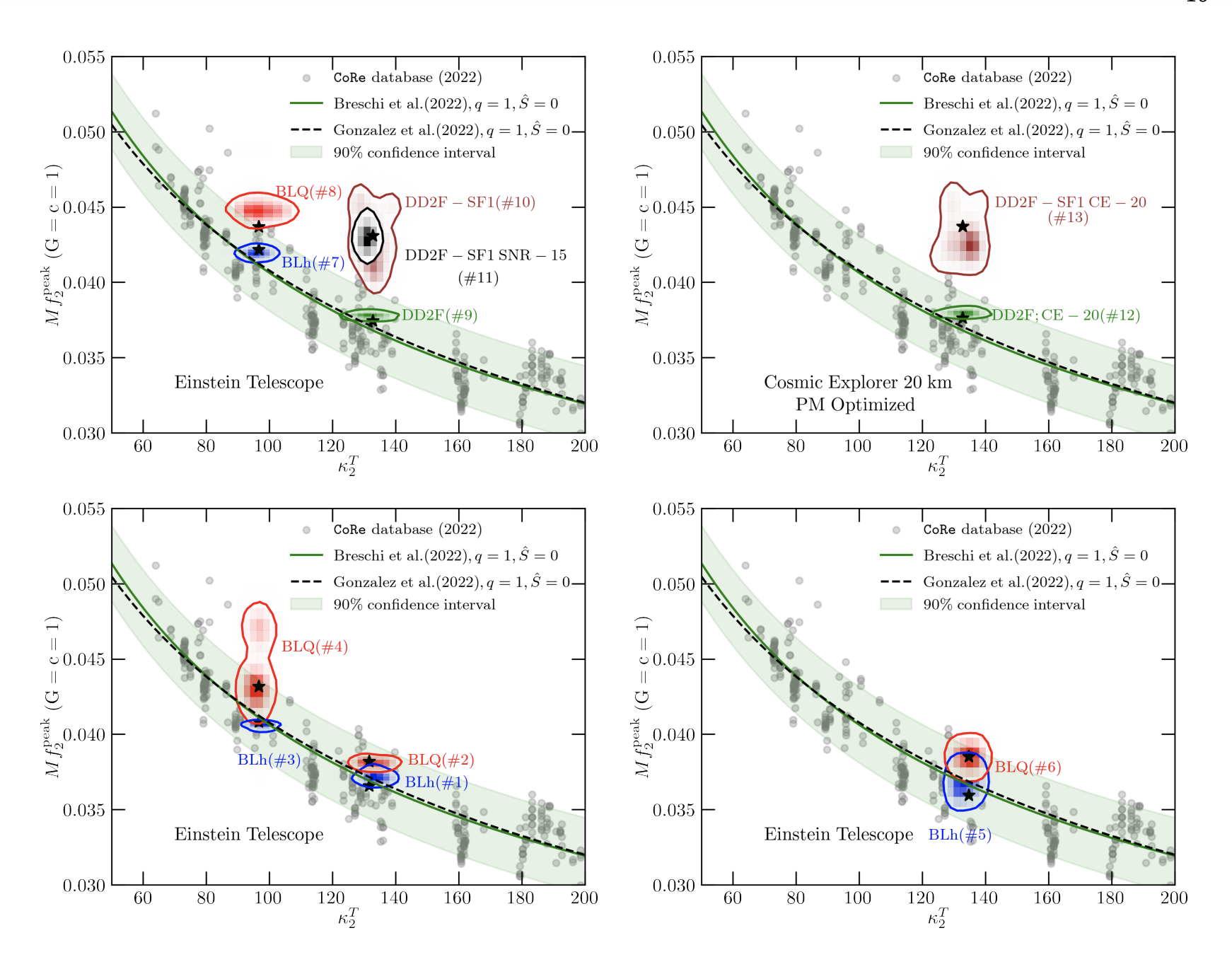Detectability of QCD phase transitions in binary neutron star mergers: Bayesian inference with the next generation gravitational wave detectors
Aviral Prakash, Ish Gupta, Matteo Breschi, Rahul Kashyap, David Radice, Sebastiano Bernuzzi, Domenico Logoteta, B.S. Sathyaprakash
Preprint on arxiv:2310.06025 [gr-qc]
Published:
We study the detectability of postmerger QCD phase transitions in neutron star binaries with next-generation gravitational-wave detectors Cosmic Explorer and Einstein Telescope. We perform numerical relativity simulations of neutron star mergers with equations of state that include a quark deconfinement phase transition through either a Gibbs or Maxwell construction. These are followed by Bayesian parameter estimation of the associated gravitational-wave signals using the NRPMw waveform model, with priors inferred from the analysis of the inspiral signal. We assess the ability of the model to measure the postmerger peak frequency f2 and identify aspects that should be improved in the model. We show that, even at postmerger signal to noise ratios as low as 10, the model can distinguish (at the 90% level) f2 between binaries with and without a phase transition in most cases. Phase-transition induced deviations in the f2 from the predictions of equation-of-state insensitive relations can also be detected if they exceed 1.6σ. Our results suggest that next-generation gravitational wave detectors can measure phase transition effects in binary neutron star mergers. However, unless the phase transition is “strong”, disentangling it from other hadronic physics uncertainties will require significant theory improvements.

